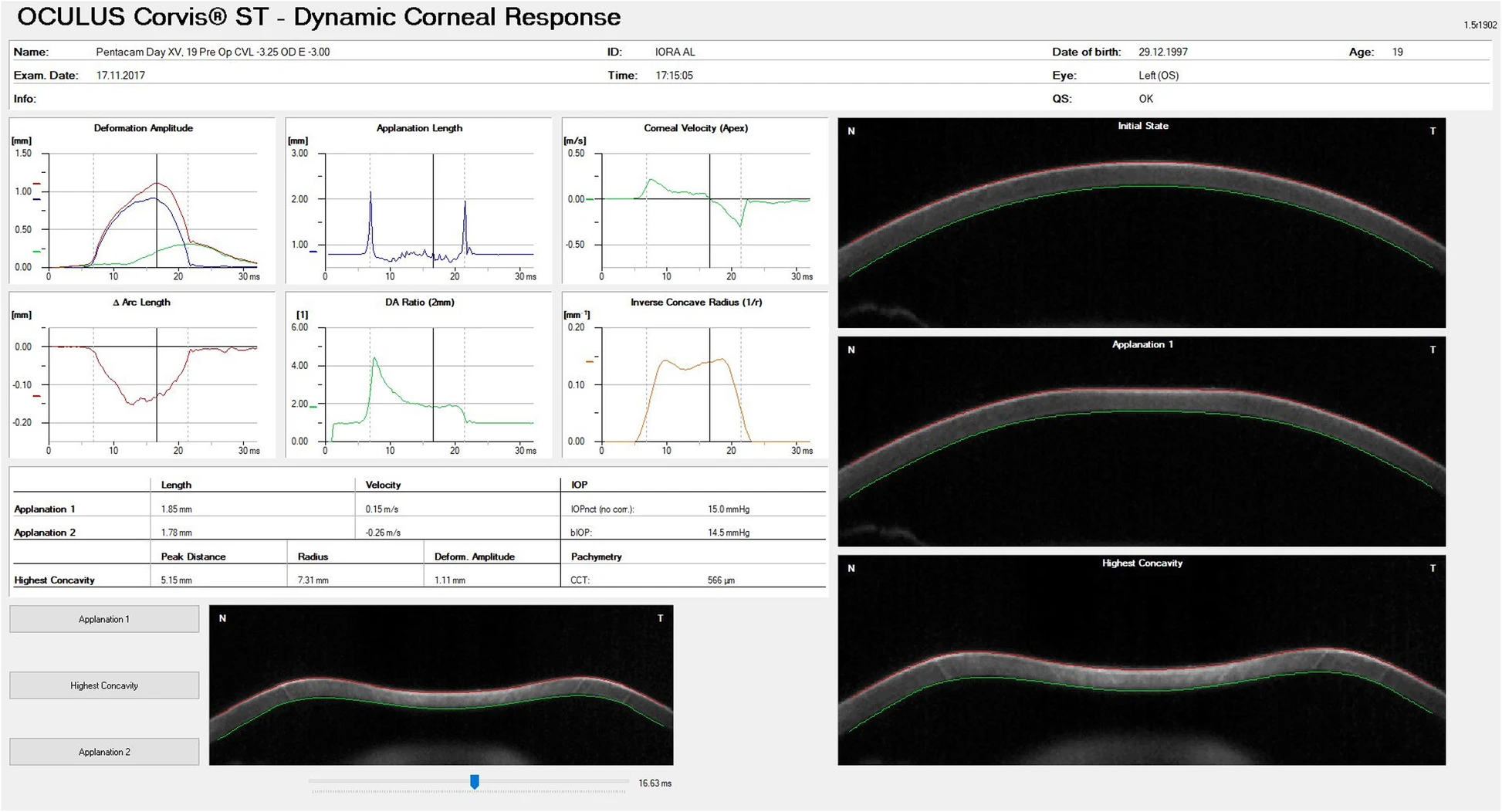 |
The maximum distance of corneal displacement posteriorly after a pulse of air is released, called the deformation amplitude, correlated with axial length growth and hence can help predict response to orthokeratology. Photo: Oculus. Click image to enlarge. |
Researchers recently evaluated how orthokeratology (ortho-K) affects corneal biomechanical properties in myopia control and whether these parameters can predict the clinical efficacy of the intervention. Their findings were threefold:
- Corneal biomechanics first fluctuate before stabilizing with long-term ortho-K use, especially during the first week.
- These metrics can be correlated with axial length (AL) progression in children wearing ortho-K lenses.
- A measure called the deformation amplitude (DA) maximum, when combined with age and AL at baseline, can help predict AL progression in low myopes using ortho-K.
A total of 125 children seven to 15 years old using ortho-K lenses were followed, with data taken from their right eyes. Corneal biomechanical parameters and ocular biometry were measured using the Corvis ST—an air puff tonometer with a Scheimpflug camera—at baseline, one week and one, three, six, 12, 18 and 24 months. AL was measured every six months after baseline.
During the two-year follow-up, nine corneal biomechanical parameters, including DA maximum, varied between baseline and one week, stabilizing during the remainder of the study period. Mean AL increased from 25.02mm to 25.38mm, and baseline DA maximum strongly correlated with AL progression.
In the multiple regression models, baseline age, AL and DA maximum were independent factors for AL progression. The area under the curve—a statistical measure of the correspondence between variables—using the three values for predicting excessive AL progression in low and moderate myopes was 0.902 and 0.698, respectively.
“The combination of baseline DA and other indicators is promising for its application in ortho-K to predict future excessive AL progression with high accuracy and provide a useful reference about the efficacy of ortho-K for clinicians before lens fitting,” the study authors wrote in their paper.
Xiang K, Chen J, Zhao W, et al. Changes of corneal biomechanics in children using orthokeratology and their roles in predicting axial length progression: a prospective two-year study. Acta Ophthalmol. March 23, 2023. [Epub ahead of print]. |


